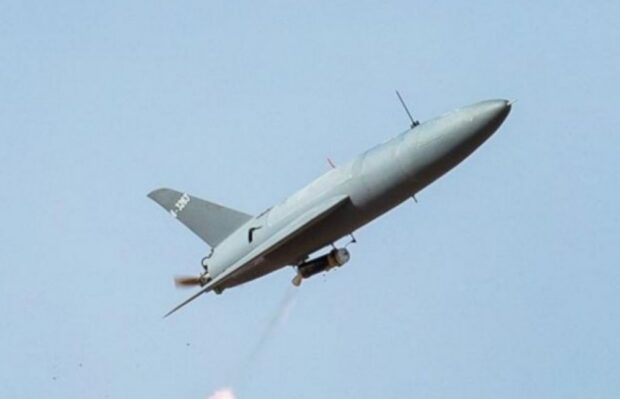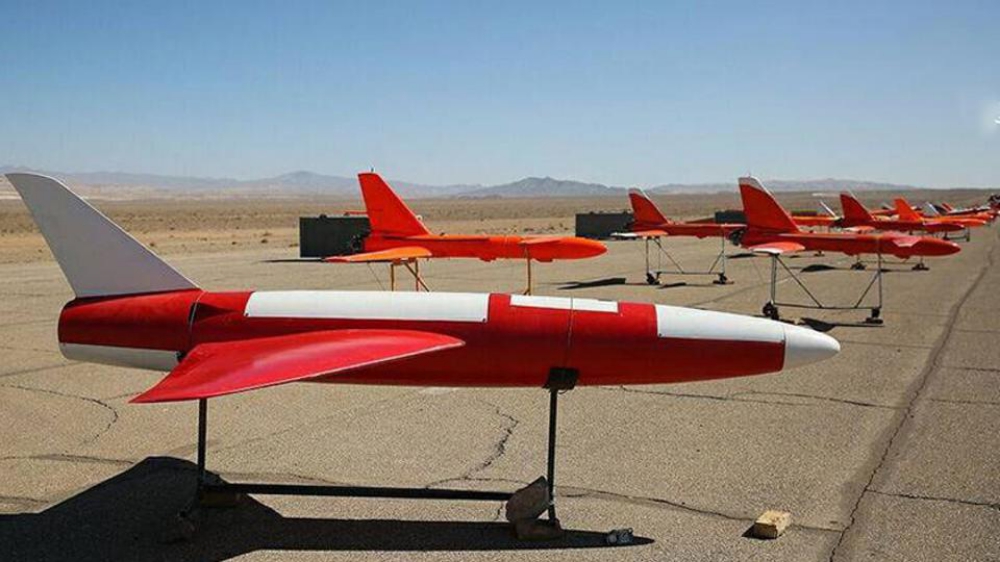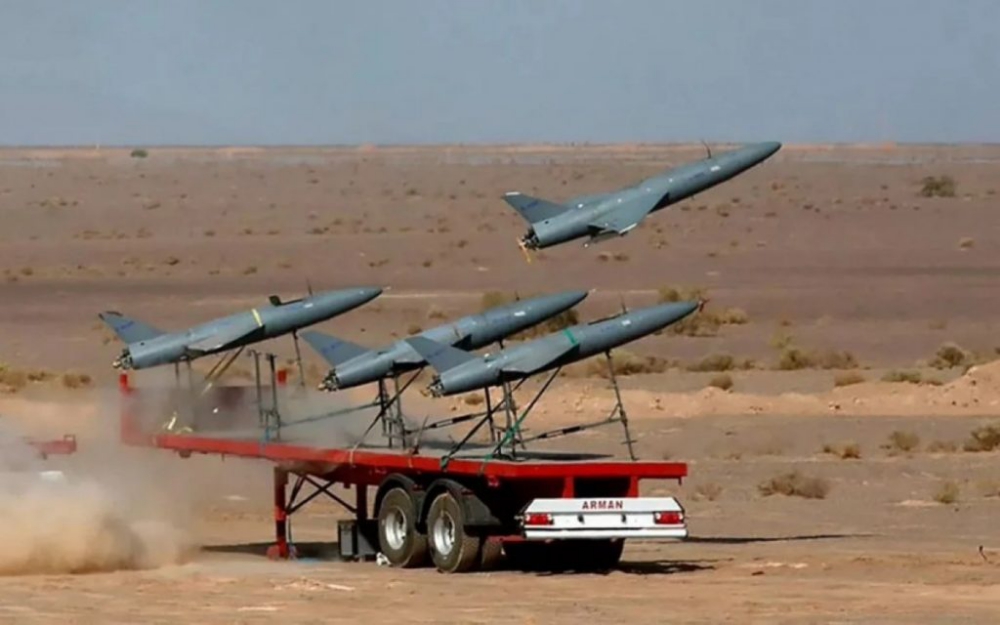Russia is preparing to deploy advanced Arash-2 Iranian kamikaze drones to supplement the Shahed-136s that have already inflicted serious damage on Ukrainian power infrastructure. The new and more capable loitering munitions are faster, smarter and longer-range, and likely to stretch Ukrainian air defenses even further.
The first indication of the Russian deal for Arash-2 with Iran came from anonymous sources leaked on Russian social media Telegram on October 15, with a similar claim made by anonymous Iranian officials quoted by Reuters on October 18. Ukraine’s General Staff then stated that Iranian instructors are already training Russian operators on Arash-2 in Iran. It is not known when the drones will be delivered.
Iran unveiled the Kian-1 drone in 2015. It had a six-foot wingspan, and, thanks to a new locally-developed microjet engine, a top speed of over 200 mph. It was used mainly as an aerial target, but was also touted as a possible kamikaze drone with a 70-pound warhead.
The success of the Kian-1 led to the bigger Kian-2 in 2018. This had a larger fuel tank with a reported range of more than 1,000 km and is specifically designed for one-way long-range attacks.
The next evolution is the 2020 Arash-1, which appears almost identical to the Kian-2, with the big difference being the guidance system and possibly more fuel capacity. While the Kian-2 relies on satellite navigation, the Arash-1 has a loitering mode and sensors to pick up enemy radar emissions. It can then home in on radar sets and destroy them in a kamikaze attack, in a concept similar to Israeli’s IAI Harpy drone developed in the 1980s.
However, according to Iran’s Admiral Mousavi, who ran a 2020 drone combat exercise, the Arash-1 has a range of 2,000 km, giving it the longest reach of any weapon of this type in the world.
Another difference is that while the Kian drone requires dedicated launchers, Arash-1 can be launched from a container mounted on the back of a truck, a feature it shares with the Shahed-136. A rocket booster lofts it into the air to a speed where the jet engine can take over.
The Arash-2 was only introduced in September this year. According to Brigadier General Kiomars Heidari, commander of the Iranian Army’s ground forces, the Arash-2 was specifically designed to strike cities in Israel. He also stated it can act as a reconnaissance drone, and locate targets for long-range ballistic missiles, as well as carry out high-precision attacks itself. Like the Arash-1 it can loiter for hours looking for targets.
All the sources agree that Russia wants the Arash-2 version rather than the Arash-1, which is a curious military choice. Arash-1 would provide the capability to hit Ukrainian air defenses, in particular its S-300 surface-to-air missile systems, which have kept the skies over Ukraine clear of Russian aircraft and reportedly shoot down large numbers of Russian Kalibr cruise missiles. Knocking out Ukraine’s air defenses to pave the way for more attacks might be the obvious military approach. Instead, Russia seems to be doubling down on its campaign of attacks on civilian targets, in particular energy infrastructure.
Arash-2 may be used to find targets for Shahed-136s, as the version used by Russia can be reprogrammed in flight to the current location of a target, and Russia has a shortage of drones suitable for the job.
Arash-2 will also bring longer range and higher speed to the game. Its active guidance may allow it to hit precision targets, so long as it can maintain a communication link with the operator.
Observers believe that this UAV is designed to attack Israeli targets in Tel Aviv and Haifa. This new Iranian weapon can maneuver, redirect at low altitude, so Israeli air defense systems like Iron Dome are less likely to intercept this Iranian UAV easily. The defense observer said that Russia may have agreed to help Iran improve its missile and UAV technology in return for Iran filling Russia’s gap in cheap, mass-produced and affordable UAVs.
If you launch these UAVs in large enough numbers, you should theoretically overwhelm enemy air defenses because they fly at low altitudes and are cheap to manufacture. For comparison, Russia’s Kalibr cruise missiles cost about $1 million each, the American Tomahawk missiles cost up to $2 million each. As for the Shahed-136 and Arash-2 UAVs, the price is only from 10,000 to 50,000 USD. While larger systems like the S-300, Buk, and Osa are practically useless against these drones, Russian platforms like Strela-10, Tunguska, and Tors, were at the disposal of the Armed Forces of Ukraine and could be effective against UAVs. Many of them have, however, been reported to be destroyed by Russia. MANPADS, meanwhile, are ineffective, whose homing heads cannot capture drones since they do not emanate any infrared or radar frequency.
Sources: Forbes; Military-wiki



